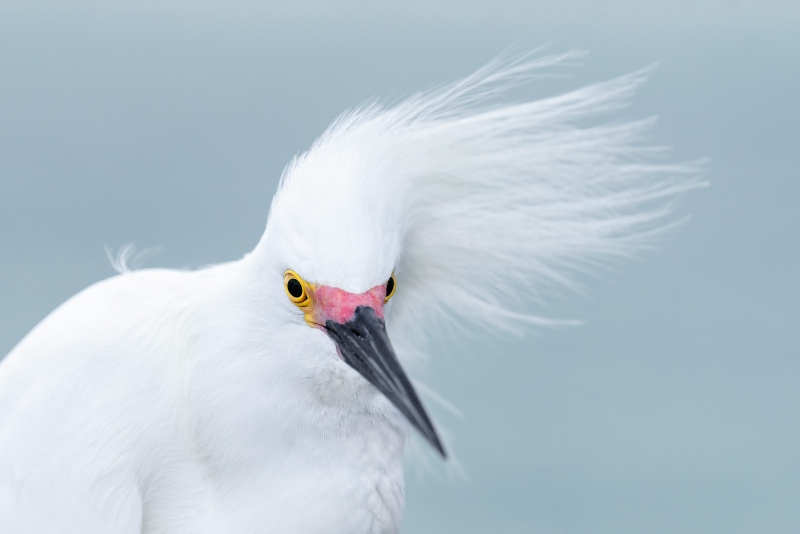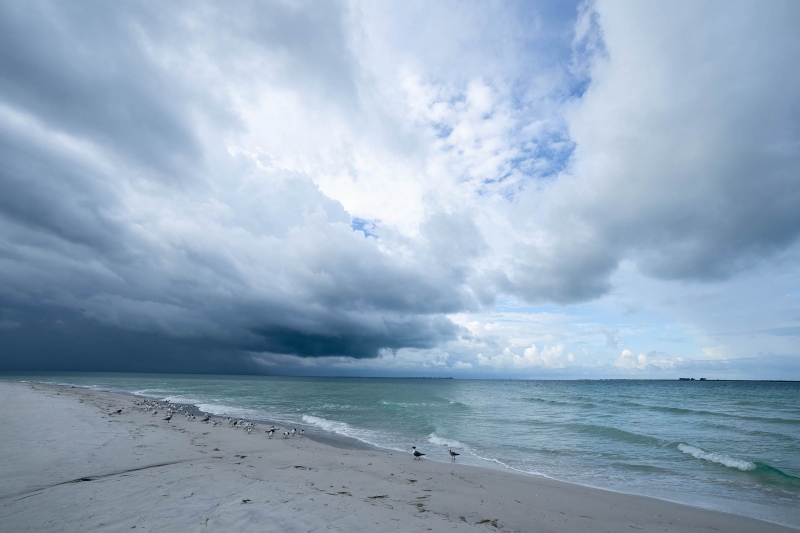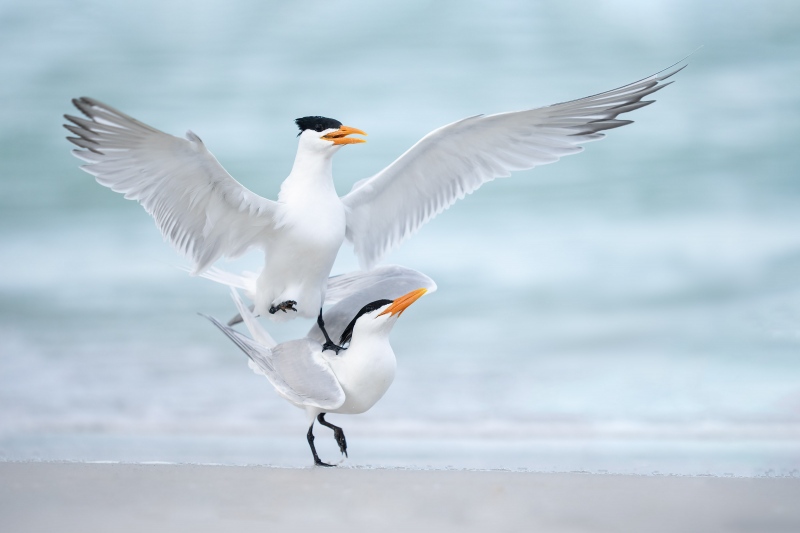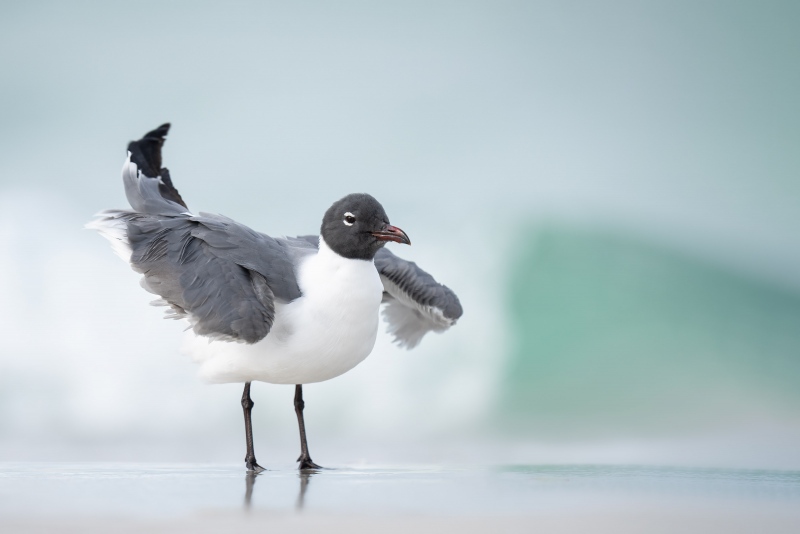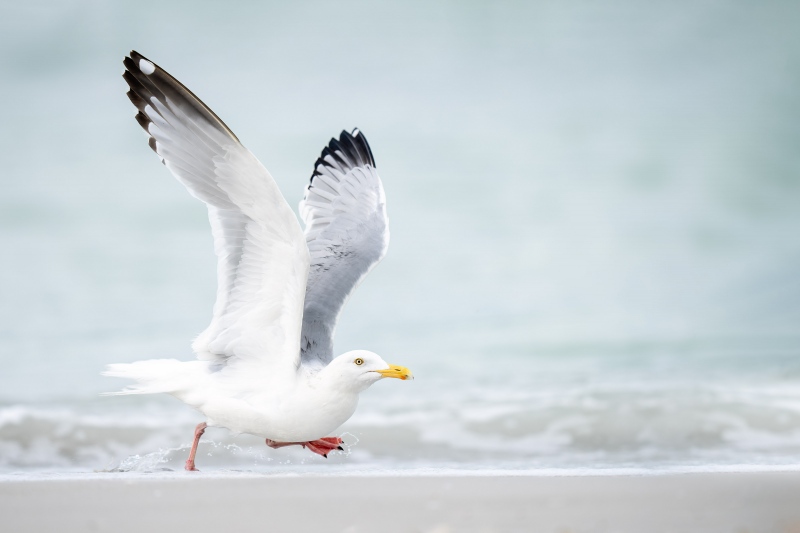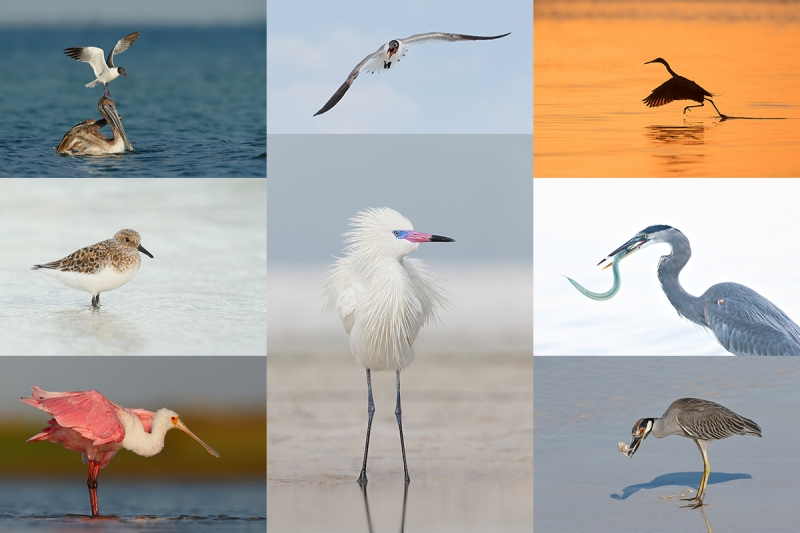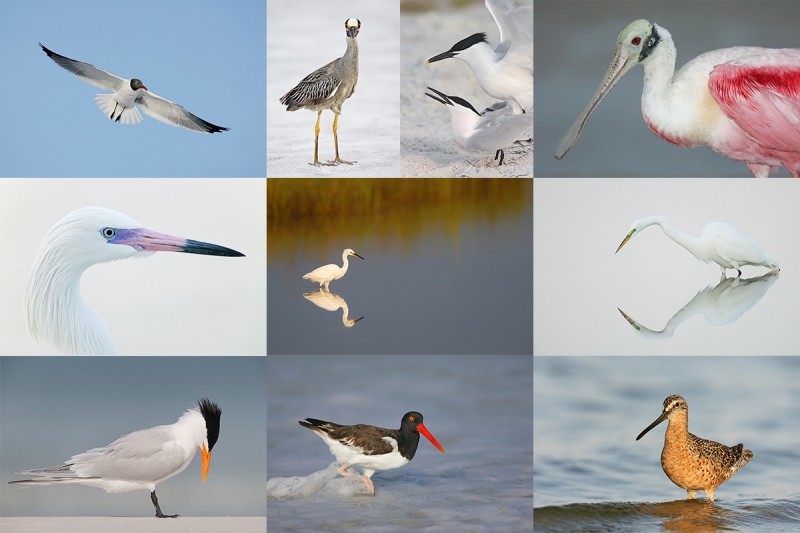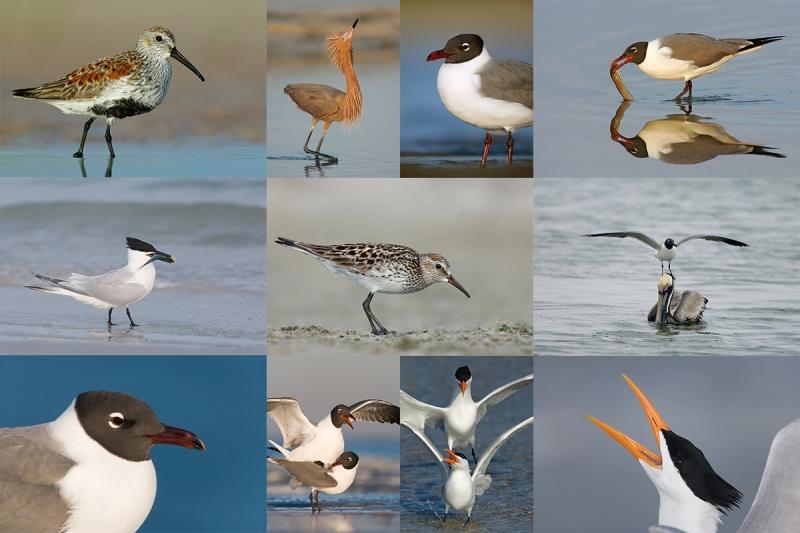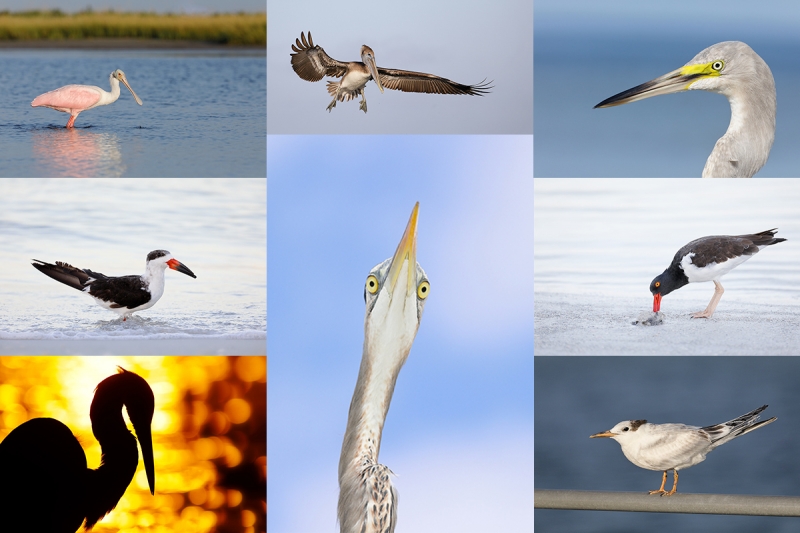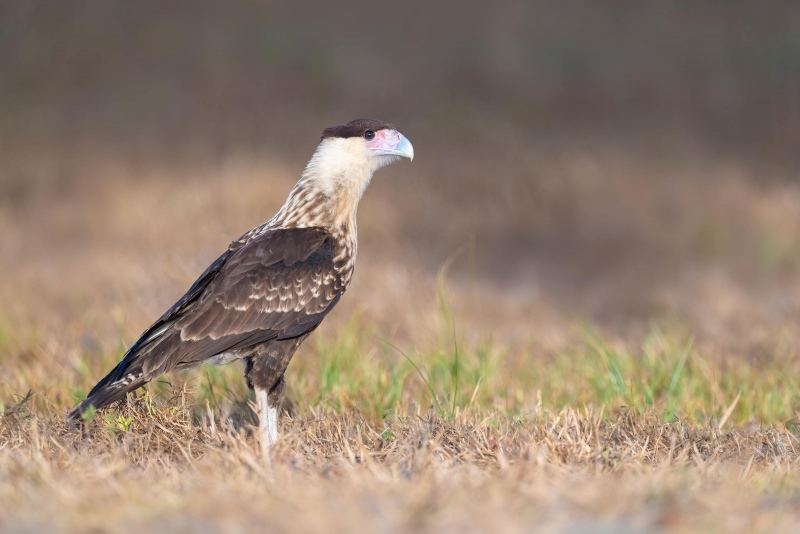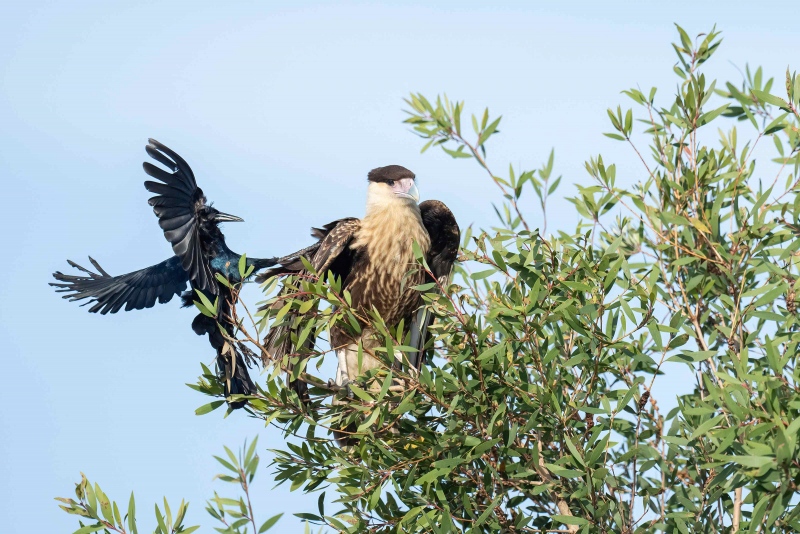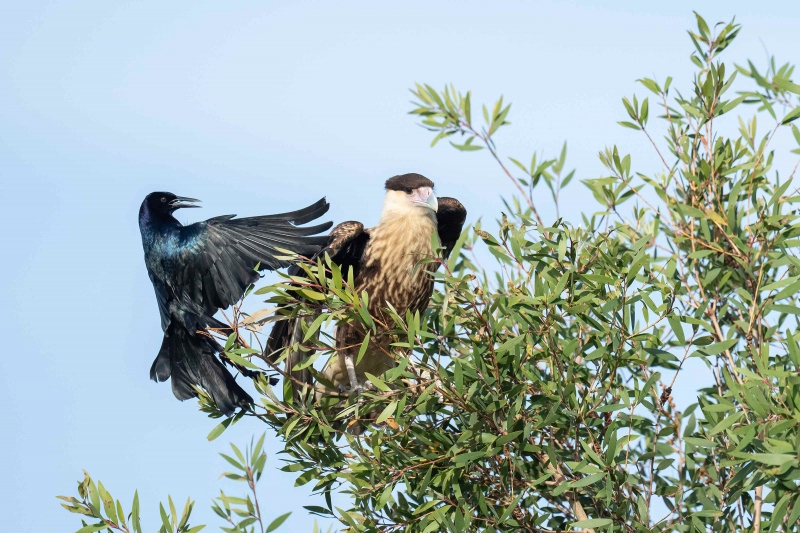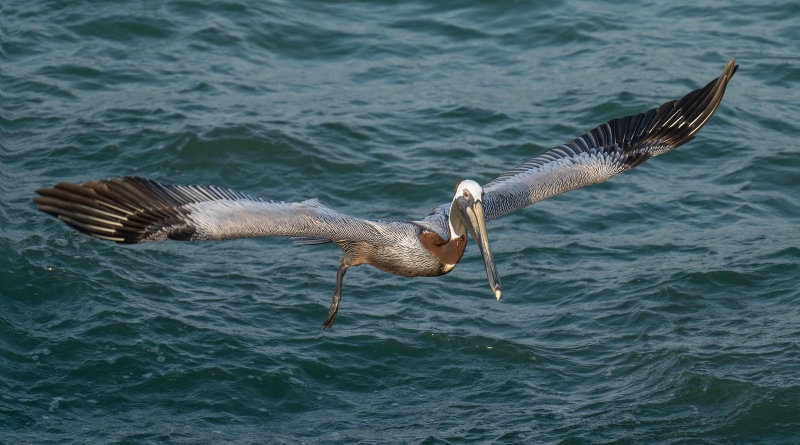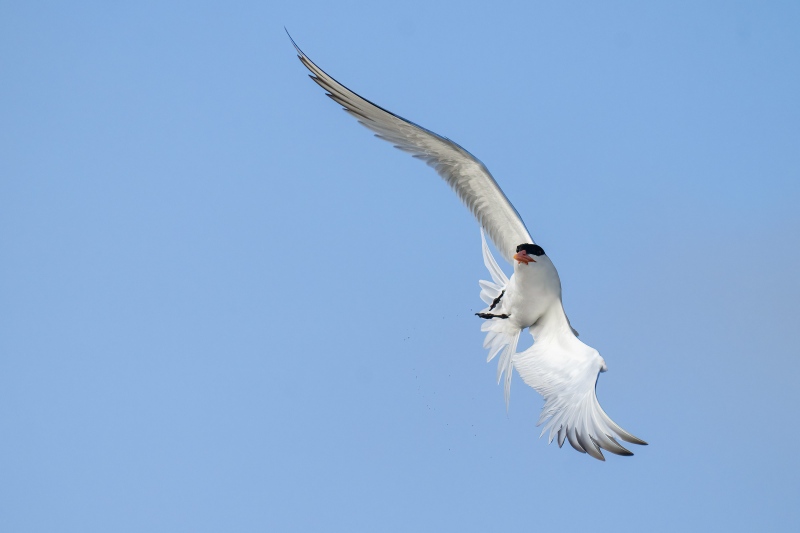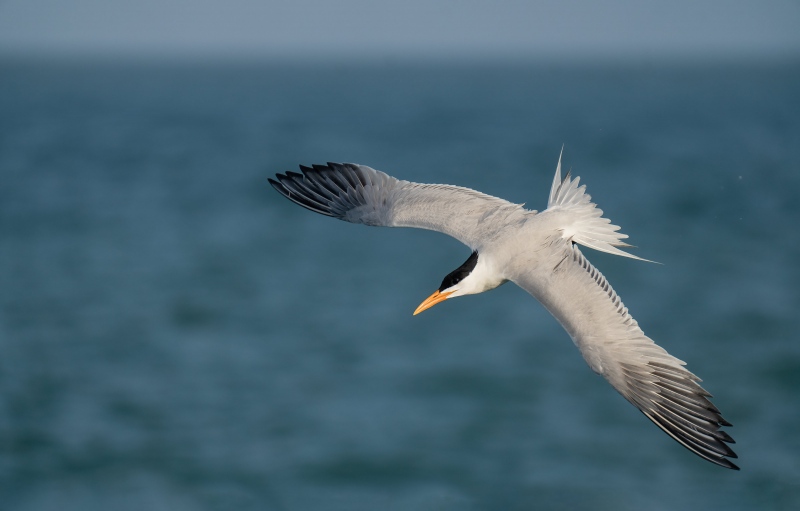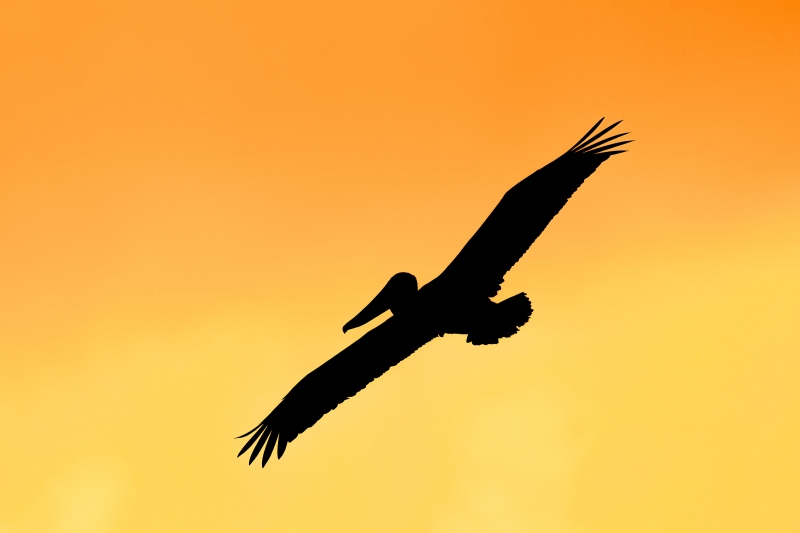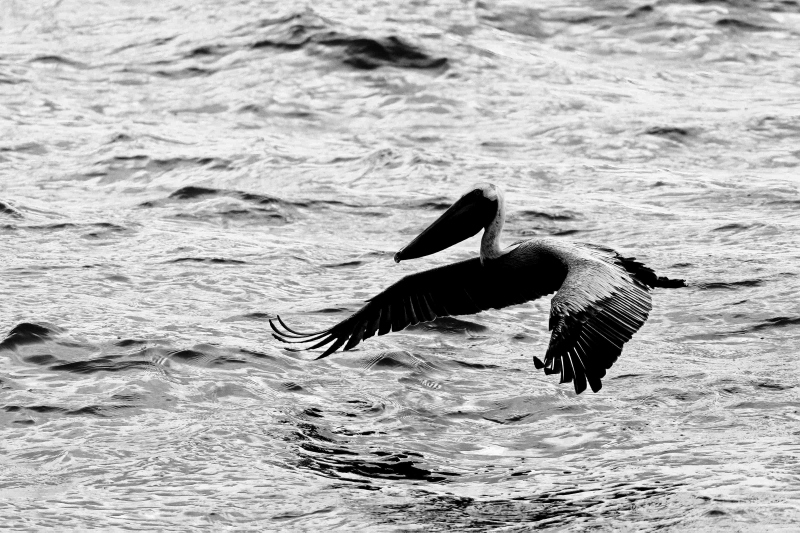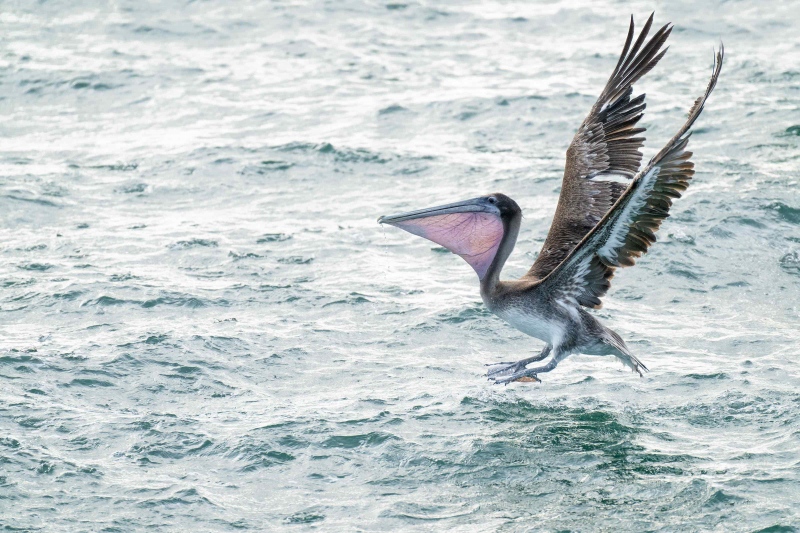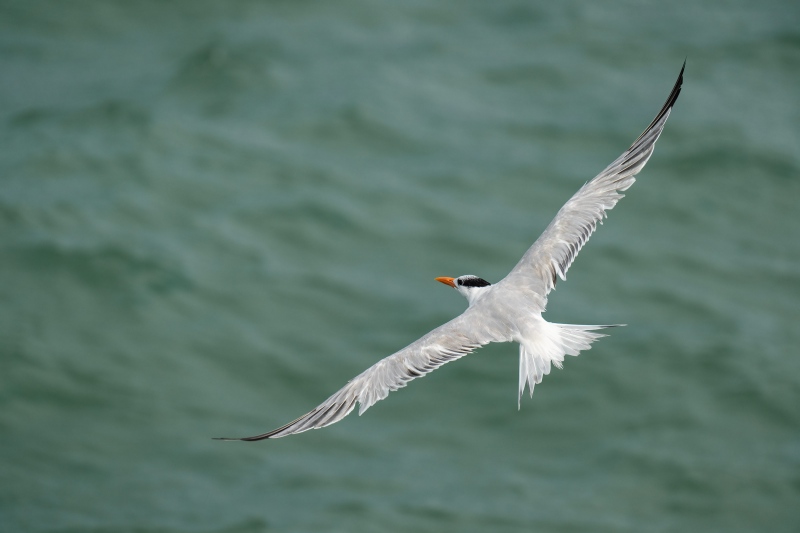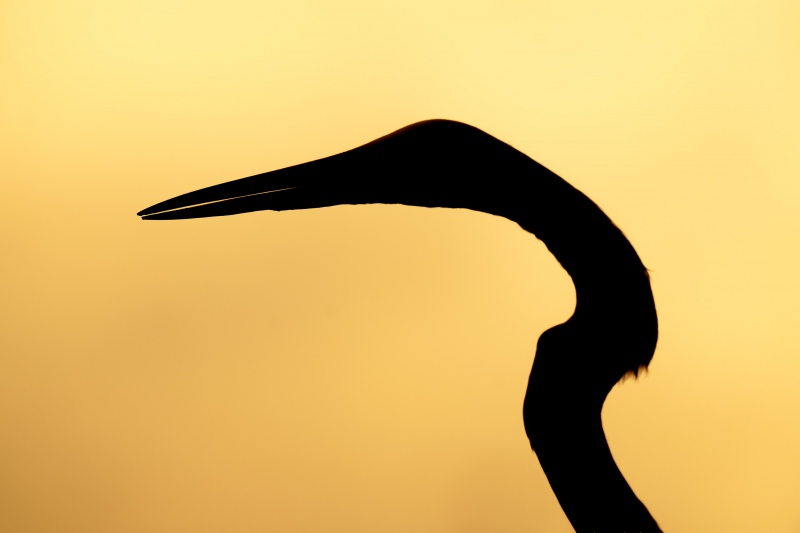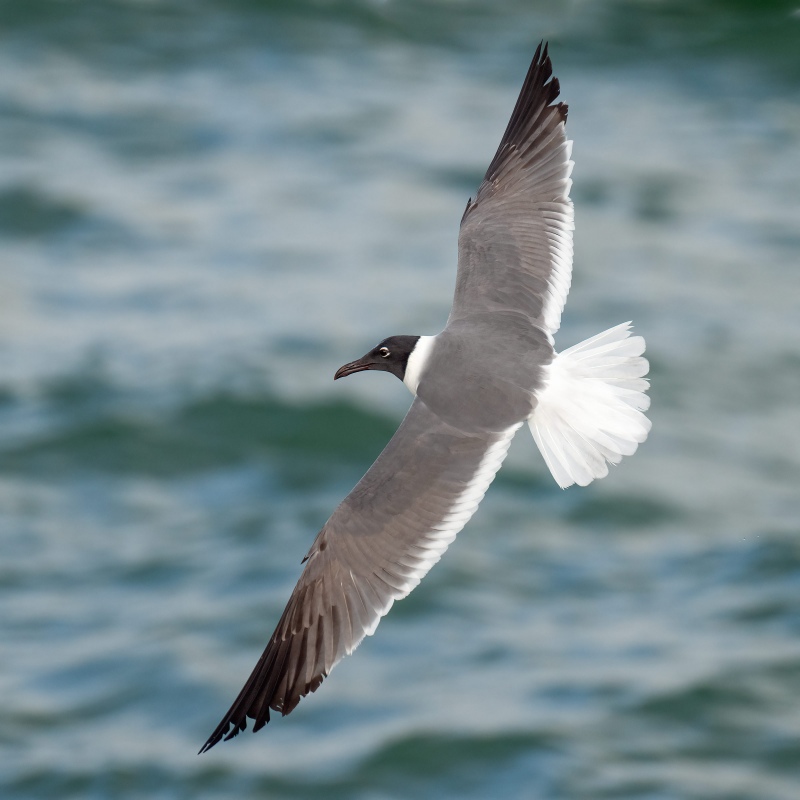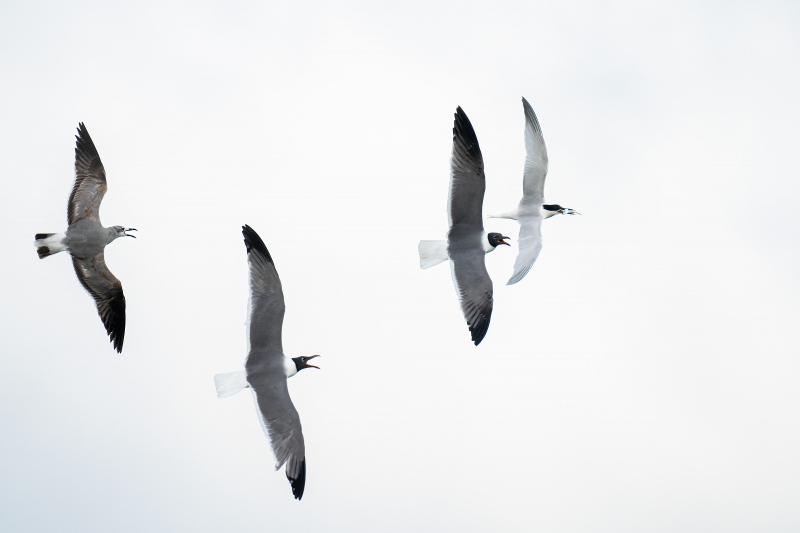April 11th, 2023 The Fact$ of Life
Right now, the market for editorial sales of natural history images has virtually disappeared. The incomes of the world’s top stock photographers are down by at least 90%). (Can you say Darrell Gulin? Like me, most depend on income from photo trips, the sale of educational materials, and income from this or that affiliate program.
In 2001, BAA sold the publication rights to images for nearly one-quarter million US dollars. That amount dropped to about $20,000 by 2011, and in 2017, to slightly more than $2,00.00. We’ve stopped counting. IPTs used to fill within days. Now I am happy to go with one or two folks, but I’d much rather have you along. And so it goes. In 2009, I turned to creating educational blog posts, now to the tune of 4002. Yes, 4002 educational blog posts. So, please remember to use either my B&H or Bedfords affiliate links for your major purposes. It does not cost you one cent to do either.
B&H Simplified
To ensure that I get credit for your B&H purchases, you can always click here. The tracking is invisible but greatly appreciated. And, you can use your PayBoo card. You must use the website to order. B&H will reopen on Fri April 14. Thanking me for the past 4000 educational blog posts could not be any easier and will not cost you one penny additional. Please shoot me your B&H receipt for major purchases.
Bedfords Simplified
Click here to start your search. Choose standard shipping, and when you get to the payment page, enter BIRDSASART in the discount code box and hit apply. You will be upgraded to free second day air Fed-Ex and receive 3% cash back on your credit card once your stuff ships. Either is superbly appreciated by yours truly.
A Note From DeSoto #1 Participant Bob Handin
It is hard to put into words my feelings about my recent Fort DeSoto IPT. I have been taking pictures for many years and even have a few nice bird pictures. However, my few days with Artie have upped my game in amazing ways. I was fortunate to be the only person who signed up for his first 2023 Fort DeSoto IPT, so I got to spend a lot of time with the master. He let me use one of his SONY A1 cameras and a 200-600 lens; of course, I fell in love with it. We shared an Air BNB and did some extra trips to the North Tampa Rookery, Stick Marsh, and Indian Lake Estates to see his beloved Sandhill Crane families. Artie is a patient and experienced teacher and by the end of the IPT I was dreaming about sun angle, wind direction, head angle, and how to properly frame my subjects. I took some of the best pictures of my life and will treasure them and my newfound knowledge. Artie and I have had some similar life experiences and share having Type 2 Diabetes. He introduced me to his very healthy “Birds As Art” diet and my blood sugars improved along with my photography. Artie was everything one would want in an IPT instructor, knowledgeable, willing to share his knowledge, and making sure you got a good picture; he is engaging, humorous, and unbelievably enthusiastic. My advice is to sign up for an IPT ASAP. It just might be a life-changing experience.
Bob Handin
What’s Up?
Monday morning at DeSoto was good, but not as good as Sunday morning was. I did have three different Reddish Egrets including a white morph but as soon as I got settled, one would fly in and chase the first one away. I have discovered a great new spot with lots of terns and gulls and nobody else around. You will find me there tomorrow on the first morning of the second DeSoto IPT, another private affair with only a single registrant — Steve Pumillia from MN.
Please remember to use the B&H and Amazon links that are found on most blog pages and to use the BIRDSASART discount code at checkout when purchasing your new gear from Bedfords to get 3% back on your credit card and enjoy free second-day air FedEx. Please, also, consider joining a BAA IPT. You will be amazed at how much you will learn!
You can find some great photo accessories (and necessities, like surf booties!) on Amazon by clicking on the Stuff tab on the orange/yellow menu bar above. On a related note, it would be extremely helpful if blog-folks who, like me, spend too much money on Amazon, would get in the habit of clicking on the Amazon logo link on the right side of each blog post when they shop online. As you might expect, doing so will not cost you a single penny, but would be appreciated tremendously by yours truly. And doing so, works seamlessly with your Amazon Prime account.
Please remember that if an item — a Delkin flash card, or a tripod head — for example, that is available from B&H and/or Bedfords, is also available in the BAA Online Store, it would be great, and greatly appreciated, if you would opt to purchase from us. We will match any price. Please remember also to use my B&H affiliate links or to earn 3% cash back at Bedfords by using the BIRDSASART discount code at checkout for your major gear purchases. Doing either often earns you free guides and/or discounts. And always earns my great appreciation.
|
|
|
This image was created on 9 April while scouting for the 2nd DeSoto IPT. I used the handheld Sony FE 70-200mm f/2.8 GM OSS II lens with the Sony FE 1.4x Teleconverter (at 280mm) and The One, the Sony Alpha 1 Mirrorless Digital Camera.. The exposure was determined via Zebras. ISO 1600: 1/1250 sec. at f/5.6 (stopped down one stop) in Manual mode. AWB at 8:34:27am on a dark stormy morning.
Tracking: Expand Spot AF/C with Bird-Eye/Face Detection performed perfectly. Click on the image to enjoy a high-res version.
Image #1: Snowy Egret with crest blowing in the wind
|
When the “Wrong” Wind Helps
When a bird with crest feathers faces away from (rather than into) the wind, you can often make some neat images. Fortunately, this handsome and cooperative Snowy Egret was more interested in the cast-netting fisherman nearby than in the wind direction. The pink lores will intensify over the next week or two until they are a bright cherry red. Those changes occur as a result of increased hormonal flow only when the birds are actively engaged at a breeding location.
|
|
|
This image was created on 9 April while scouting for the 2nd DeSoto IPT. I used the handheld Sony FE 12-24mm f/2.8 GM lens (at 13mm) and The One, the Sony Alpha 1 Mirrorless Digital Camera.. The exposure was determined via Zebras. ISO 640: 1/2000 sec. at f/5.6 (stopped down 2-stops) in Manual mode. AWB at 8:34:27am on a dark stormy morning.
Tracking: Expand Spot AF/C with Bird-Eye/Face Detection performed perfectly. Click on the image to enjoy a high-res version.
Image #2: Gulls, terns, and stormy skies
|
Why?
When I recently purchased the Sony FE 12-24mm f/2.8 GM lens, I knew in advance that I would use it only rarely. When I saw the huge storm clouds on Monday morning, I stuck the lens in a watch cap into my old X-trahand vest (along with the 70-200 II). These days it is rare that I head into the field with more than one lens (much less two!). Friend Anita North borrowed the 12-24 and made better images with it than I did!
I shall call it my big skies/storm cloud lens
|
|
|
This image was created on 9 April while scouting for the 2nd DeSoto IPT. While seated on the sand, I used the knee-pod technique with the handheld Sony FE 400mm f/2.8 GM OSS lens and The One, the Sony Alpha 1 Mirrorless Digital Camera). The exposure was determined via Zebra technology with ISO on the Thumb Dial. ISO 800. 1/3200 sec. at f/2.8 (wide open) in Manual mode. When evaluated in RawDigger, the raw file brightness was determined to be dead-solid perfect (ho hum). AWB at 8:52:07am on a dark stormy morning.
Tracking: Expand Spot AF-C with Bird Face/Eye detection enabled performed to perfection. Be sure to click on the image to enjoy a high-res version.
Image #3: Male Royal Tern stepping off female after copulating
|
Why Not the Copulation?
Seeing the image above of the male stepping off his mate, many would ask why I did not photograph the act itself? The answer is that when they were copulating, they were blocked by a Laughing Gull right in front of them. As the pair moved to my right, into the northeast wind, they came clear. So, I acquired focus quickly and fired off a short sequence as he hopped down to the sand. Though I did come up with a new twist, a Laughing Gull was removed from the right side of the frame using techniques detailed in Digital Basics II.
|
|
|
This image was created on 9 April while scouting for the 2nd DeSoto IPT. While seated on the sand, I used the knee-pod technique with the handheld Sony FE 400mm f/2.8 GM OSS lens and The One, the Sony Alpha 1 Mirrorless Digital Camera). The exposure was determined via Zebra technology with ISO on the Thumb Dial. ISO 500. 1/2500 sec. at f/3.2 (stoped down 1/3-stop) in Manual mode. When evaluated in RawDigger, the exposure was determined to be dead-solid perfect (ho hum). AWB at 9:22:30am as things brightened up a bit on a dark stormy morning.
Tracking: Expand Spot S AF-C with Bird Face/Eye detection enabled performed to perfection. Be sure to click on the image to enjoy a high-res version.
Image #4: Laughing Gull ruffling
|
Hard to Believe
When this handsome gull leaned forward and began to ruffle, I pressed and held the shutter button for three seconds and created a 78-frame sequence. I kept 13. This one was my clear favorite. After the second edit, I will likely get down to three or four keepers. Oh, and by the way, every frame was razor-sharp on the bird’s eye.
|
|
|
This image was created on 9 April while scouting for the 2nd DeSoto IPT. While seated on the sand, I used the knee-pod technique with the handheld Sony FE 400mm f/2.8 GM OSS lens and The One, the Sony Alpha 1 Mirrorless Digital Camera). The exposure was determined via Zebra technology with ISO on the Thumb Dial. ISO 500. 1/2500 sec. at f/3.2 (stoped down 1/3-stop) in Manual mode. When evaluated in RawDigger, the exposure was determined to be dead-solid perfect (ho hum). AWB at 9:28:06am as things brightened up a bit on a dark stormy morning.
Tracking: Zone AF-C with Bird Face/Eye detection enabled performed to perfection. Be sure to click on the image to enjoy a high-res version.
Image #5:Herring Gull taking flight
|
Dog Running on the Low Wall of the Breakwater
Anita and I had a large group of terns and gulls courting and displaying right in front of us as we were seated on the sand. Suddenly, they all took flight at once and left the scene. We turned to see a lady jogger running with her dog on a leash. The problem was that the dog was running along the top of the low wall. Only the handsome Herring Gull that I had been eyeing remained. It looked nervous ,so I framed and followed it as it took flight to follow the rest of the flock to God-knows-where. The birds never returned.
Anita ran into the lady later on and said “Hi” to the dog and chatted with the woman. She explained that it was breeding season for the gulls and the terns and that the birds were extremely stressed by her bird dog running up on the wall. She asked if the woman might keep the dog on the sidewalk next to her when she saw flocks of birds on the beach while running. She replied, “But, my dog likes to run along the top of the wall.” End of discussion.
Your Call?
Which is the strongest of today’s five featured images. Why did you make your choice.
|
|
|
Fort DeSoto in spring is rife with tame birds, many in full breeding plumage. Click on the composite to enjoy a larger version.
Clockwise from upper left around to center: Laughing Gull landing on head of Brown Pelican, Laughing Gull in flight, Reddish Egret sunrise silhouette, Great Blue Heron with needlefish, Yellow-crowned Night Heron with ghost crab, Roseate Spoonbill, Sanderling in breeding plumage, and white morph Reddish Egret in glorious breeding plumage.
|
The 2023 Spring Fort DeSoto Instructional Photo Tours (IPTs)
Spring Fort DeSoto IPT #3: Tuesday 9 May through the morning session on 12 May 2023. 3 1/2 Days: $1899.00 includes three working brunches. Limit six photographers/Openings: 4.
Fort DeSoto, located just south of St. Petersburg, FL, is a mecca for terns and gulls, wading birds, and shorebirds in spring. Many of the birds will be in full breeding plumage. Simply put, DeSoto is the new Ding Darling. Migrant shorebirds are in abundance, and many are exceedingly tame. We should have great chances on Royal and Sandwich Terns and both white- and dark-morph Reddish Egrets. Great Egret, Snowy Egret, Great Blue Heron, Tricolored Heron, and White Ibis are easy as well and we will almost surely come up with a tame Yellow-crowned Night-Heron or two along with some American Oystercatchers. We will enjoy lots of great flight photography, especially with the Brown Pelicans.
|
|
|
Again, Fort DeSoto in spring is rife with tame birds, most in breeding plumage. Click on the composite to enjoy a larger version.
Clockwise from upper left around to center: Laughing Gull in flight, Yellow-crowned Night-Heron, Sandwich Terns copulating, Roseate Spoonbill, Great Egret with reflection, breeding plumage Short-billed Dowitcher, American Oystercatcher, Royal Tern, white morph Reddish Egret, and Snowy Egret in marsh.
|
In Addition!
We should also get to photograph a variety of other shorebirds including Black-bellied, Semipalmated, Wilson’s, Snowy, and Piping Plovers, Willet, Dunlin, Short-billed Dowitcher, Marbled Godwit, and most especially, Red Knot, with many individuals in their handsome breeding plumages. In spring the T-shaped peninsula and the newly formed sandbar, Outback Key, are literally packed with avian treasures.
With just a bit of luck, we may get to photograph one of Florida’s most desirable species: Roseate Spoonbill. And we will surely get to do some Brown Pelican flight photography. With luck, they will have Laughing Gulls landing on their heads. And though not guaranteed, Wood Stork might well be expected. And we will be on the lookout for a migrant passerine fallout in the event of a thunderstorm or two.
|
|
|
Yes, Fort DeSoto in spring is rife with tame birds, most in breeding plumage. Click on the composite to enjoy a larger version.
Clockwise from upper left around to center: breeding plumage Dunlin, dark morph Reddish Egret displaying, Laughing Gull vertical front-end portrait, Laughing Gull with prey item, landing on head of Brown Pelican, breeding plumage Royal Tern displaying, Royal Terns — pre-copulatory stance, Laughing Gulls copulating, Laughing Gull head portrait, breeding plumage Sandwich Tern with fish, and a rare treat, a breeding plumage White-rumped Sandpiper.
|
What You Will Learn on a DeSoto IPT
- 1- The basics and fine points of digital exposure; how to get the right exposure every time after making a single test exposure (or before if you are using SONY gear).
- 2- How and why to work in Manual mode (even if you’re scared of it).
- 3- How to approach free and wild birds without disturbing them.
- 4- Lots about bird behavior and how to use that knowledge to help you create better images.
- 5- To age and identify many species of shorebirds including various sandpipers, plovers, dowitchers, and possibly yellowlegs.
- 6- To spot good situations and to choose the best perspective.
- 7- To see, evaluate, and understand the light.
- 8- To design pleasing images by mastering your camera’s AF system.
- 9- And perhaps most importantly, to evaluate wind and sky conditions and understand how they affect bird photography.
- 10- More than you could ever imagine.
|
|
|
You got it by now! Fort DeSoto in spring is rife with tame birds, most in breeding plumage. Click on the composite to enjoy a larger version.
Clockwise from upper left around to center: Roseate Spoonbill, immature Brown Pelican in flight, the heron/egret hybrid, American Oystercatcher feeding, immature Royal Tern on railing, Great Egret morning silhouette, Black Skimmer in surf, and underside head portrait of Great Blue Heron.
|
The Details
Morning sessions will run two and one-half to three hours; afternoon sessions about two. There is never a set schedule on an IPT — we adapt to the conditions. On cloudy mornings with the right wind, we may opt to photograph till noon and skip the afternoon session. That especially when the afternoon weather is looking iffy. We may opt to visit a great North Tampa rookery if conditions warrant that.
There will be a Photoshop/Image Review session before and after brunch (included) each of the three full days. That will be followed by Instructor Nap Time. Each of these IPTs will run with only a single registrant as I do not like disappointing anyone. The best airport is Tampa (TPA). Once you register, you will receive an e-mail with lodging information. Do know that it is always best if IPT folks stay in the same general area (rather than at home or at a friend’s place a good distance away).
Folks attending this IPT will be out in the field as early as possible and stay out late to take advantage of sunrise and sunset colors; this is pretty much a staple on almost all BIRDS AS ART Instructional Photo-Tours. Doing so will often present unique photographic opportunities, opportunities that will be missed by those who need their beauty rest and those who need to get home for a proper dinner. I really love it when I am leaving the beach at 9:30am on a sunny morning after a great session just as a carful or two of well-rested photographers are arriving … We will be getting wet.
Your $599 deposit is due now. Credit cards are OK for that. You can register by calling Jim or Jennifer during weekday business hours at 863-692-0906 with a credit card in hand. Once you leave a deposit, you will receive an e-mail with your balance statement and instructions for sending your balance check three months before the trip begins. If you wish to pay in full right off the bat, you can make your check out to BIRDS AS ART and send it via US mail here: BIRDS AS ART, PO BOX 7245, Indian Lake Estates, FL 33855. You will receive a confirmation e-mail with detailed instructions, and clothing and gear advice two months before the trip. Please shoot me an e-mail if you plan to register or if you have any questions.
IPT veterans and couples or friends signing up together may e-mail for discount information.
Typos
With all blog posts, feel free to e-mail or to leave a comment regarding any typos or errors.
April 9th, 2023 What’s Up?
On Saturday morning, I headed to Stick Marsh. Despite the fog, I managed to make a few good images using the handheld Sony 400mm f/2.8 with the 1.4X TC. On Saturday afternoon, I headed to the North Tampa Rookery. Bright sun made life very difficult.
Today is Sunday 9 April 2023. This blog post took at least 90 minutes to prepare including the time spent on the three image optimizations. Wherever you are and whatever you are doing, I hope that you too have a great day.
Please remember to use the B&H and Amazon links that are found on most blog pages and to use the BIRDSASART discount code at checkout when purchasing your new gear from Bedfords to get 3% back on your credit card and enjoy free second-day air FedEx. Please, also, consider joining a BAA IPT. You will be amazed at how much you will learn!
You can find some great photo accessories (and necessities, like surf booties!) on Amazon by clicking on the Stuff tab on the orange/yellow menu bar above. On a related note, it would be extremely helpful if blog-folks who, like me, spend too much money on Amazon, would get in the habit of clicking on the Amazon logo link on the right side of each blog post when they shop online. As you might expect, doing so will not cost you a single penny, but would be appreciated tremendously by yours truly. And doing so, works seamlessly with your Amazon Prime account.
Please remember that if an item — a Delkin flash card, or a tripod head — for example, that is available from B&H and/or Bedfords, is also available in the BAA Online Store, it would be great, and greatly appreciated, if you would opt to purchase from us. We will match any price. Please remember also to use my B&H affiliate links or to earn 3% cash back at Bedfords by using the BIRDSASART discount code at checkout for your major gear purchases. Doing either often earns you free guides and/or discounts. And always earns my great appreciation.
Iceland
My decades-long dream of spending time on Grimsey Island, Iceland, with the puffins — 13 days in this case!, will be realized this coming July. I am doing back-to-back trips as a participant. If anyone would like information on the world’s greatest Iceland/Atlantic Puffin trip this coming July, please contact me via e-mail.
B&H
Many folks have written recently stating that they purchased a Sony a1 from B&H and would like their free membership in the Sony 1 Info and Updates Group, a $150.00 value. When I check my affiliate account, their orders have not been there. When I let them know that they get credit for B&H purchases only if they use one of the many B&H affiliate links on the blog or begin their searches with this link, they are always disappointed. If in doubt, please contact me via e-mail and request a BH link. I am always glad to help and to guide you to the right gear.
Bedfords Amazing BAA Discount Policy
Folks who have fallen in love with Bedfords can now use the BIRDSASART coupon code at checkout to enjoy a post-purchase, 3% off-statement credit (excluding taxes and shipping charges) on orders paid with a credit card. The 3% credit will be refunded to the card you used for your purchase. Be sure, also, to check the box for free shipping to enjoy free Second Day Air Fed-Ex. This offer does not apply to purchases of Classes, Gift Cards, prior purchases.
Visit the Bedfords website here, shoot Steve Elkins an e-mail, or text him on his cell phone at (479) 381-2592.
Money Saving Reminder
Many have learned that if you need a hot photo item that is out of stock at B&H and would like to enjoy getting 3% back on your credit card along with free 2nd Day Air Fed-Ex Air shipping, your best bet is to click here, place an order with Bedfords, and enter the coupon code BIRDSASART at checkout. If an item is out of stock, contact Steve Elkins via e-mail or on his cell phone at (479) 381-2592 (Central time). Be sure to mention the BIRDSASART coupon code and check the box for Free Shipping. That will automatically upgrade to free 2nd Day Air Fed-Ex. Steve has been great at getting folks the hot items that are out of stock at B&H and everywhere else. The waitlists at the big stores can be a year or longer for the hard-to-get items. Steve will surely get you your gear long before that. For the past year, he has been helping BAA Blog folks get their hands on items like the SONY a 1, the SONY 200-600 G OSS lens, the Canon EOS R5, the Canon RF 100-500mm lens, and the Nikon 500mm PF. Steve is personable, helpful, and eager to please.
Important Note
As an Amazon Associate, I earn a small percentage when you purchase from Amazon after using any of the Amazon links on the blog (including the logo-link on the right side of each blog post page). My affiliate link works fine with Amazon Prime and using it will not cost you a single cent. Huge thanks, BTW 🙂


Gear Questions and Advice
Too many folks attending BAA IPTs and dozens of photographers whom I see in the field and on BPN, are — out of ignorance — using the wrong gear, especially when it comes to tripods and more especially, tripod heads. And the same is true in spades when ordering new camera bodies or lenses. My advice will often save you some serious money and may help you avoid making a seriously bad choice. Please know that I am always glad to answer your gear questions via e-mail. If you are desperate, you can try me on my cell at 863-221-2372. Please leave a message and shoot me a text if I do not pick up.
|
|
|
This image was created on 7 April 2023 down by the lake near my home at ILE. Seated in the driver’s seat of my SUV, I used the BLUBB-supported Sony FE 600mm f/4 GM OSS lens with the Sony FE 1.4x Teleconverter, and The One, the Sony Alpha 1 Mirrorless Digital Camera.. ISO 1250. The exposure was determined by Zebras with ISO on the rear wheel: 1/1250 second at f/5.6 (wide open) in Manual mode. RawDigger showed that the raw file brightness was dead-solid perfect. AWB at 8:19:45am on a variably sunny morning.
Tracking: Expand Spot/AF-C with Bird-Eye/Face Detection performed perfectly. Click on the image to enjoy the high-res version.
Image #1:Crested Caracara on the ground
|
The Longer the Effective Focal Length, the Shallower the Angle of Declination
The angle of declination (AOD) is the number of degrees from parallel to the ground that you point the lens down to get on the subject. If you are lying on the ground, the AOD is zero degrees. If you are standing right above a bird and pointing the lens straight down at the ground, the AOD is 90°. AODs ranging from five to twenty degrees will generally yield attractive images featuring fairly low perspectives.
Working from the driver’s seat at 840m with the rig supported by a BLUBB on the lowered window, offers a nice low perspective. I’d estimate the AOD at about 15°. If I took off the 1.4XTC and moved the car closer to the bird, I’d be pointing the lens down at a steeper angle to get on the bird, probably about 20°. If I added the 2X and moved the car further away, I could have gotten the AOD down below 10° for a more intimate view.
When using your vehicle as a blind, remember to turn the engine off before making any image. And if you are working on a BLUBB with a lens that offer direct manual focus (DMF), remember to turn the switch to OFF so that focus is not thrown off when you move the lens to re-compose.
The Situation and the Solution
A Cable Release for Bird Photography???
The young caracara flew off and landed in a bush in the marsh. I followed in my SUV. There were several grackles in the bush, and they began harassing the young raptor. To decrease my angle of inclination (AOI), I got out of the car and set up the tripod. I quickly realized that I was much too close at 840mm. So, I removed the TC and moved to the other side of the car about 30 feet further away from the caracara so that I could frame more loosely and perhaps make a few frames that would include the attacking bird. I moved the tracking: Expand Spot to the lower left part of the frame, kept AF active, and, looking through the viewfinder, attempted to press the shutter button when a grackle entered the frame. Of course, I was too slow.
Several months ago I purchased two Vello RS-S2II Wired Remote Switches for Select Cameras with Sony Multi-Terminal Connector. Though I have used them only sparingly, one of them was just what I needed for the job at hand. I plugged in the release, firmed up the Levered-Clamp FlexShooter Pro, and made sure that the AF point was squarely on the caracara’s face. The remote release allowed me to take my eye from the viewfinder and survey the whole scene — I would be able to see the grackle coming. In addition, it is much less tiring to hold the cable release at waist height rather than having to keep your arm raised while waiting for the action.
I missed one attack when I glanced at a crane flying to my right. Darn it! Then things got worse; all of the grackles flew off and gave the youngster some peace. As the sun was getting high in the sky, I thought about leaving but decided to stay for five more minutes on the clock. Just as I was about to pack up, I spotted a grackle flying in from the south making a beeline for the caracara. I pressed and held the cable release as the attack ensued. Two good frames were one more than I had dreamed of.
Don’t forget that I had railed against the use of cable releases for bird photography for nearly four decades. It is never too late to learn.
Robus Tripods
With Induro tripods no longer available, and Gitzo having transformed from best to worst (by far), B&H began producing a new line of tripods and calls them Robus, obviously a play on the word “robust.” They are quite good — durable and very stable with smooth twist locks. So far, they have done well around salt water. They are fractionally more difficult to clean than the Induros. Thanks, Jim!
Here is a recent e-mail conversation I had with skilled and experienced bird photographer Cliff Beittel:
CB: Artie,
Interesting to see you’re using a Robus tripod now. I bought one a few months ago to replace my tallest, seldom-used Gitzo (stored on the ground floor, locked up by saltwater after Ian). Never owned an Induro, but the Robus seems excellent for half the price of a Gitzo.
AM: Agree. Gitzo has been garbage for well more than a decade. They’ve been priced through the roof, they totally fail anywhere near saltwater, and, once they farmed out their repairs, getting something fixed was pretty much impossible (even if you could afford the parts).
I have several Robus models including the tallest, heaviest one that I use when working on a tall stepstool.
Much love, a
Need a Robus Tripod?
If you would like advice on which Robus tripod would be best for you, shoot me an e-mail with Robus Tripod? in the subject lines. Please include your height, the system you use, and the longest lens that you own.
Typos
With all blog posts, feel free to e-mail or to leave a comment regarding any typos or errors.
April 8th, 2023 Hard to Believe: 4000!
This blog post is the 4000th published since I began on 3 March 2009. At that time, I decided to phase out the BAA Bulletins and do all of my teaching on the blog. The comments on the introductory first “post,” are quite interesting. You can read them here.
Stuff
As you peruse today’s ten featured images, note the incredible versatility of the Sony 70-200 II with the 2X II TC and the a1.
Your Call
Not all of today’s images could be described as great. The purpose of the post is to open your eyes to the various possibilities when you are faced with wind-against-sun conditions. After enlarging and viewing today’s ten images, all are invited to leave a comment with noting what they think is the strongest image, which they think is the weakest image, and the reason they made each choice.
My Call
Thanks to the several folks left thoughtful comments at Wednesday blog post.
Here are my thoughts:
Image #1 was a small crop from our left and from below. Do you like the wider view in Image #2 or the tighter crop in Image #1? Why?
I wound up liking the wider view, Image #2 as it did give a better sense of an excited chick running at full speed.
Which image was created first? How do you know?
I knew that Image #2 was created before Image #1 because of the position of the shadow.
Which pose do you like best? Why?
For me, it is a tie. I do prefer the action in Image #2, but I do not like that the tip of the bill (in #2) merges with the leading edge of the far wing.
Overall, which image do you like best? Why?
All things considered, I’ll go with Image #2 for the sense of speed it provides.
Was I lucky? Why or why not? Are there any “buts”?
I was very lucky to be in just the right spot when the chick began to run. But, my knowledge of bird behavior allowed me to have all the right settings while anticipating the best possible course of events.
DeSoto #2
To learn about the late registration discount for the 2nd DeSoto IPT (Tuesday 11 April through the morning session on 14 April 2023. 3 1/2 Days: $1899.00 includes three working brunches. Limit six photographers/Openings: 5), call me at 863-221-2372. If I do not pick up, please shoot me a text.
What’s Up?
I created one really good image of an Osprey in flight with a fresh-caught Black Crappie down by the lake on Tuesday morning. It was returning to the new natural nest in a dead tree at the north end of the lakefront.
Yesterday was Friday 7 April 2023. When originally published, I ad just got back from my morning photo session. I had gotten a late start due to the fog; the sun broke through at about 7:45am. I had driven around for a while without accomplishing much other than a few snaps of the large colt at the north end. I was about to head home early to finish this post, but then, I spotted one of the young Crested Caracaras. Working from the front seat of my SUV at 840mm working off the BLUBB, I made my best field guide portraits of the bird that had been in the nest less than a week ago. When the bird flew off, it landed atop a big bush in the marsh. I followed and saw that it was being harassed by Boat-tailed Grackles. I set up the 600 on the tripod and just before the caracara flew off.
This blog post took at least three hours to prepare including the time spent on the image optimizations. Wherever you are and whatever you are doing, I hope that you too have a great day.
Please remember to use the B&H and Amazon links that are found on most blog pages and to use the BIRDSASART discount code at checkout when purchasing your new gear from Bedfords to get 3% back on your credit card and enjoy free second-day air FedEx. Please, also, consider joining a BAA IPT. You will be amazed at how much you will learn!
You can find some great photo accessories (and necessities, like surf booties!) on Amazon by clicking on the Stuff tab on the orange/yellow menu bar above. On a related note, it would be extremely helpful if blog-folks who, like me, spend too much money on Amazon, would get in the habit of clicking on the Amazon logo link on the right side of each blog post when they shop online. As you might expect, doing so will not cost you a single penny, but would be appreciated tremendously by yours truly. And doing so, works seamlessly with your Amazon Prime account.
Please remember that if an item — a Delkin flash card, or a tripod head — for example, that is available from B&H and/or Bedfords, is also available in the BAA Online Store, it would be great, and greatly appreciated, if you would opt to purchase from us. We will match any price. Please remember also to use my B&H affiliate links or to earn 3% cash back at Bedfords by using the BIRDSASART discount code at checkout for your major gear purchases. Doing either often earns you free guides and/or discounts. And always earns my great appreciation.
|
|
|
This image was created on 2 April at Fort DeSoto Park. While standing at full height, I used the handheld Sony FE 70-200mm f/2.8 GM OSS II lens with the Sony FE 2x teleconverter (at 226mm), and The One, the Sony Alpha 1 Mirrorless Digital Camera.. The exposure was determined via Zebras. ISO 1000: 1/2500 sec. at f/5.6 (wide open) in Manual mode. AWB at 8:31:23am on a variably sunny morning.
Tracking: Expand Spot AF/C with Bird-Eye/Face Detection performed perfectly. Click on the image to enjoy a high-res version.
Image #1: Brown Pelican ready to dive
|
Wind Against Sun — “What to Do?” I
If you are faced with a sunny morning with the sun behind you and the wind blowing in your face, be on the lookout for subjects that are flying the “wrong” way, those that for one reason or another, are not flying (or facing) into the wind. The adult pelican in Image #1 flew the “wrong” way as it was after the school of baitfish that was right up against the pier.
|
|
|
This image was created on 2 April at Fort DeSoto Park. While standing at full height, I used the handheld Sony FE 70-200mm f/2.8 GM OSS II lens with the Sony FE 2x teleconverter (at 400mm), and The One, the Sony Alpha 1 Mirrorless Digital Camera.. The exposure was determined via Zebras. ISO 500: 1/3200 sec. at f/5.6 (wide open) in Manual mode. AWB at 8:42:00am on a variably sunny morning.
Tracking: Zone AF/C with Bird-Eye/Face Detection performed perfectly. Click on the image to enjoy a high-res version.
Image #2: Royal Tern wheeling in flight
|
Wind Against Sun — “What to Do?” II
When faced with wind-against-sun conditions, study the flight patterns of fishing birds. Some of the terns and gulls were flying away from me into the wind, but would rock up and turn left after a missed strike. That had them flying at me to some degree.
|
|
|
This image was created on 2 April at Fort DeSoto Park. While standing at full height, I used the handheld Sony FE 70-200mm f/2.8 GM OSS II lens with the Sony FE 2x teleconverter (at 400mm), and The One, the Sony Alpha 1 Mirrorless Digital Camera.. The exposure was determined via Zebras. ISO 800: 1/4000 sec. at f/5.6 (wide open) in Manual mode. AWB at 8:45:34am on a variably sunny morning.
Tracking: Zone AF/C with Bird-Eye/Face Detection performed perfectly. Click on the image to enjoy a high-res version.
Image #3: Royal Tern dorsal view flight shot
|
Wind Against Sun — “What to Do?” III
In the same situation as in #2, there were some birds that were diving from right to left toward the proper sun angle. Bingo!
|
|
|
This image was created on 2 April at Fort DeSoto Park. While standing at full height, I used the handheld Sony FE 70-200mm f/2.8 GM OSS II lens with the Sony FE 2x teleconverter (at 400mm), and The One, the Sony Alpha 1 Mirrorless Digital Camera.. The exposure was determined via Zebras. ISO 500: 1/4000 sec. at f/5.6 (wide open) in Manual mode. AWB at 8:55:46am on a variably cloudy morning.
Tracking: Zone AF/C with Bird-Eye/Face Detection performed perfectly. Click on the image to enjoy a high-res version.
Image #4: Brown Pelican with sky silhouette
|
Wind Against Sun — “What to Do?” IV
When dealing with wind-against-sun conditions, another strategy that can pay off nicely is to turn around and look at the backlit subjects between you and the sun. Do understand that with a few clouds in the eastern sky, the sky in the properly exposed raw file for this image was white. The sky color is introduced during the raw conversion in Photoshop.
|
|
|
This image was created on 2 April at Fort DeSoto Park. While standing at full height, I used the handheld Sony FE 70-200mm f/2.8 GM OSS II lens with the Sony FE 2x teleconverter (at 400mm), and The One, the Sony Alpha 1 Mirrorless Digital Camera.. The exposure was determined via Zebras. ISO 1600: 1/4000 sec. at f/5.6 (wide open) in Manual mode. AWB at 8:56:41am on a variably cloudy morning.
Tracking: Zone AF/C with Bird-Eye/Face Detection performed perfectly. Click on the image to enjoy a high-res version.
Image #5: Brown Pelican backlit B&W emerging after dive
|
Wind Against Sun — “What to Do?” V
Note that this backlit image was created less than one minute after the previous image. Using the same shutter speed and aperture, only the ISO changed. Chalk another one up to Sony Zebra technology for stills. By studying the EXIF data for all ten of today’s featured images, you can see just how valuable Zebras can be when the light is changing almost constantly.
I could have gone either way with the image optimization, but opted to go for the “Victory at Sea” look.
|
|
|
This image was created on 2 April at Fort DeSoto Park. While standing at full height, I used the handheld Sony FE 70-200mm f/2.8 GM OSS II lens with the Sony FE 2x teleconverter (at 400mm), and The One, the Sony Alpha 1 Mirrorless Digital Camera.. The exposure was determined via Zebras. ISO 1600: 1/4000 sec. at f/5.6 (wide open) in Manual mode. AWB at 8:57:21am on a variably cloudy morning.
Tracking: Zone AF/C with Bird-Eye/Face Detection performed perfectly. Click on the image to enjoy a high-res version.
Image #6: Brown Pelican backlit emerging after dive with bill pouch distended
|
Wind Against Sun — “What to Do?” VI
As the bird in this image was not lined up with the sun as was the bird in #5, I opted to process it to show the true colors of the pelican, in part because I like the light coming through the distended bill pouch.
|
|
|
This image was created on 2 April at Fort DeSoto Park. While standing at full height, I used the handheld Sony FE 70-200mm f/2.8 GM OSS II lens with the Sony FE 2x teleconverter (at 400mm), and The One, the Sony Alpha 1 Mirrorless Digital Camera.. The exposure was determined via Zebras. ISO 800: 1/4000 sec. at f/5.6 (wide open) in Manual mode. AWB at 9:10:40am on a variably cloudy morning.
Tracking: Expand Spot AF/C with Bird-Eye/Face Detection performed perfectly. Click on the image to enjoy a high-res version.
Image #7: Royal Tern flying away
|
Wind Against Sun — “What to Do?” VII
On wind-against-sun days, it never hurts to pray for clouds as they open up a variety of possibilities. Those include dorsal views of birds flying away from you like the Royal Tern in #7, and several of the previous images. Yes, this image would have been stronger if the bird had looked back at me just a bit more.
|
|
|
This image was created on 2 April at Fort DeSoto Park. Crouching a bit, I used the handheld Sony FE 70-200mm f/2.8 GM OSS II lens with the Sony FE 2x teleconverter (at 400mm), and The One, the Sony Alpha 1 Mirrorless Digital Camera.. The exposure was determined via Zebras. ISO 800: 1/4000 sec. at f/5.6 (wide open) in Manual mode. AWB at 9:10:40am on a variably cloudy morning.
Tracking: Expand Spot AF/C with Bird-Eye/Face Detection performed perfectly. Click on the image to enjoy a high-res version.
Image #8: Great Egret white sky silhouette
|
Wind Against Sun — “What to Do?” VIII
When things are looking dire, turning around and facing the sun can work quite well. This Great Egret provided fodder for a pleasing silhouette. Again, the properly exposed raw file featured a white sky. To provide the potential of color, you will want to place the subject as close to the filtered sunlight as possible without including the sun in the frame.
|
|
|
This image was created on 2 April at Fort DeSoto Park. While standing at full height, I used the handheld Sony FE 70-200mm f/2.8 GM OSS II lens with the Sony FE 2x teleconverter (at 400mm), and The One, the Sony Alpha 1 Mirrorless Digital Camera.. The exposure was determined via Zebras. ISO 1600: 1/4000 sec. at f/5.6 (wide open) in Manual mode. AWB at 9:17:10am on a variably cloudy morning.
Tracking: Expand Spot AF/C with Bird-Eye/Face Detection performed perfectly. Click on the image to enjoy a high-res version.
Image #9: Laughing Gull dorsal flight
|
Wind Against Sun — “What to Do?” IX
This one is similar to #7. A but more of a head turn would have revealed the gull’s red bill. But, I do love the patterns and shapes revealed by the dorsal view, especially with the tail.
|
|
|
This image was created on 2 April at Fort DeSoto Park. While standing at full height, I used the handheld Sony FE 70-200mm f/2.8 GM OSS II lens with the Sony FE 2x teleconverter (at 400mm), and The One, the Sony Alpha 1 Mirrorless Digital Camera.. The exposure was determined via Zebras. ISO 1600: 1/3200 sec. at f/5.6 (wide open) in Manual mode. AWB at 9:27:09am on a variably cloudy morning.
Tracking: Zone AF/C with Bird-Eye/Face Detection performed perfectly. Click on the image to enjoy a high-res version.
Image #10: Laughing Gulls chasing Sandwich Tern with baitfish
|
Wind Against Sun — “What to Do?” X
With a ton of bait in the water, midair fights occurred fairly frequently. Right before I made this image, there was a point blank fracas not twenty feet in front of me. I did not even have time to zoom out and raise my lens. The full cloud cover was prefect for #10. Here’s a tip for photographing these midair battles: frame the image, acquire focus, and keep the shutter button depressed until the action if over. Do not worry about image design — you can sort things out after the fact on your computer.
|
|
|
Fort DeSoto in spring is rife with tame birds, many in full breeding plumage. Click on the composite to enjoy a larger version.
Clockwise from upper left around to center: Laughing Gull landing on head of Brown Pelican, Laughing Gull in flight, Reddish Egret sunrise silhouette, Great Blue Heron with needlefish, Yellow-crowned Night Heron with ghost crab, Roseate Spoonbill, Sanderling in breeding plumage, and white morph Reddish Egret in glorious breeding plumage.
|
The 2023 Spring Fort DeSoto Instructional Photo Tours (IPTs)
Spring Fort DeSoto IPT #2: Tuesday 11 April through the morning session on 14 April 2023. 3 1/2 Days: $1899.00 includes three working brunches. Limit six photographers/Openings: 4.
Spring Fort DeSoto IPT #3: Tuesday 9 May through the morning session on 12 May 2023. 3 1/2 Days: $1899.00 includes three working brunches. Limit six photographers/Openings: 5.
Fort DeSoto, located just south of St. Petersburg, FL, is a mecca for terns and gulls, wading birds, and shorebirds in spring. Many of the birds will be in full breeding plumage. Simply put, DeSoto is the new Ding Darling. Migrant shorebirds are in abundance, and many are exceedingly tame. We should have great chances on Royal and Sandwich Terns and both white- and dark-morph Reddish Egrets. Great Egret, Snowy Egret, Great Blue Heron, Tricolored Heron, and White Ibis are easy as well and we will almost surely come up with a tame Yellow-crowned Night-Heron or two along with some American Oystercatchers. We will enjoy lots of great flight photography, especially with the Brown Pelicans.
|
|
|
Again, Fort DeSoto in spring is rife with tame birds, most in breeding plumage. Click on the composite to enjoy a larger version.
Clockwise from upper left around to center: Laughing Gull in flight, Yellow-crowned Night-Heron, Sandwich Terns copulating, Roseate Spoonbill, Great Egret with reflection, breeding plumage Short-billed Dowitcher, American Oystercatcher, Royal Tern, white morph Reddish Egret, and Snowy Egret in marsh.
|
In Addition!
We should also get to photograph a variety of other shorebirds including Black-bellied, Semipalmated, Wilson’s, Snowy, and Piping Plovers, Willet, Dunlin, Short-billed Dowitcher, Marbled Godwit, and most especially, Red Knot, with many individuals in their handsome breeding plumages. In spring the T-shaped peninsula and the newly formed sandbar, Outback Key, are literally packed with avian treasures.
With just a bit of luck, we may get to photograph one of Florida’s most desirable species: Roseate Spoonbill. And we will surely get to do some Brown Pelican flight photography. With luck, they will have Laughing Gulls landing on their heads. And though not guaranteed, Wood Stork might well be expected. And we will be on the lookout for a migrant passerine fallout in the event of a thunderstorm or two.
|
|
|
Yes, Fort DeSoto in spring is rife with tame birds, most in breeding plumage. Click on the composite to enjoy a larger version.
Clockwise from upper left around to center: breeding plumage Dunlin, dark morph Reddish Egret displaying, Laughing Gull vertical front-end portrait, Laughing Gull with prey item, landing on head of Brown Pelican, breeding plumage Royal Tern displaying, Royal Terns — pre-copulatory stance, Laughing Gulls copulating, Laughing Gull head portrait, breeding plumage Sandwich Tern with fish, and a rare treat, a breeding plumage White-rumped Sandpiper.
|
What You Will Learn on a DeSoto IPT
- 1- The basics and fine points of digital exposure; how to get the right exposure every time after making a single test exposure (or before if you are using SONY gear).
- 2- How and why to work in Manual mode (even if you’re scared of it).
- 3- How to approach free and wild birds without disturbing them.
- 4- Lots about bird behavior and how to use that knowledge to help you create better images.
- 5- To age and identify many species of shorebirds including various sandpipers, plovers, dowitchers, and possibly yellowlegs.
- 6- To spot good situations and to choose the best perspective.
- 7- To see, evaluate, and understand the light.
- 8- To design pleasing images by mastering your camera’s AF system.
- 9- And perhaps most importantly, to evaluate wind and sky conditions and understand how they affect bird photography.
- 10- More than you could ever imagine.
|
|
|
You got it by now! Fort DeSoto in spring is rife with tame birds, most in breeding plumage. Click on the composite to enjoy a larger version.
Clockwise from upper left around to center: Roseate Spoonbill, immature Brown Pelican in flight, the heron/egret hybrid, American Oystercatcher feeding, immature Royal Tern on railing, Great Egret morning silhouette, Black Skimmer in surf, and underside head portrait of Great Blue Heron.
|
The Details
Morning sessions will run two and one-half to three hours; afternoon sessions about two. There is never a set schedule on an IPT — we adapt to the conditions. On cloudy mornings with the right wind, we may opt to photograph till noon and skip the afternoon session. That especially when the afternoon weather is looking iffy. We may opt to visit a great North Tampa rookery if conditions warrant that.
There will be a Photoshop/Image Review session before and after brunch (included) each of the three full days. That will be followed by Instructor Nap Time. Each of these IPTs will run with only a single registrant as I do not like disappointing anyone. The best airport is Tampa (TPA). Once you register, you will receive an e-mail with lodging information. Do know that it is always best if IPT folks stay in the same general area (rather than at home or at a friend’s place a good distance away).
Folks attending this IPT will be out in the field as early as possible and stay out late to take advantage of sunrise and sunset colors; this is pretty much a staple on almost all BIRDS AS ART Instructional Photo-Tours. Doing so will often present unique photographic opportunities, opportunities that will be missed by those who need their beauty rest and those who need to get home for a proper dinner. I really love it when I am leaving the beach at 9:30am on a sunny morning after a great session just as a carful or two of well-rested photographers are arriving … We will be getting wet.
Your $599 deposit is due now. Credit cards are OK for that. You can register by calling Jim or Jennifer during weekday business hours at 863-692-0906 with a credit card in hand. Once you leave a deposit, you will receive an e-mail with your balance statement and instructions for sending your balance check three months before the trip begins. If you wish to pay in full right off the bat, you can make your check out to BIRDS AS ART and send it via US mail here: BIRDS AS ART, PO BOX 7245, Indian Lake Estates, FL 33855. You will receive a confirmation e-mail with detailed instructions, and clothing and gear advice two months before the trip. Please shoot me an e-mail if you plan to register or if you have any questions.
IPT veterans and couples or friends signing up together may e-mail for discount information.
Typos
With all blog posts, feel free to e-mail or to leave a comment regarding any typos or errors.
|
|

